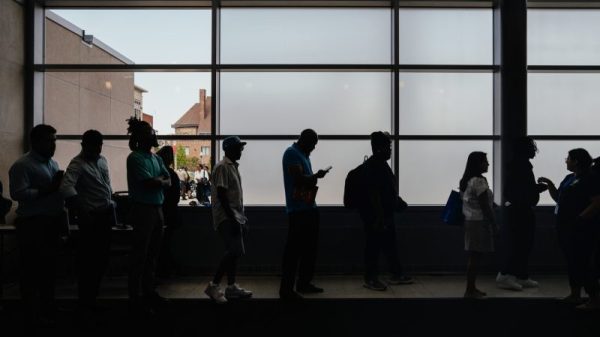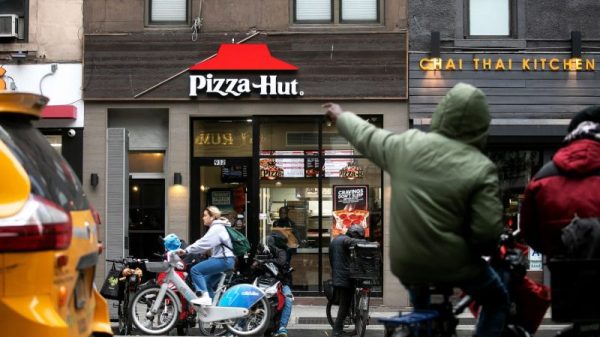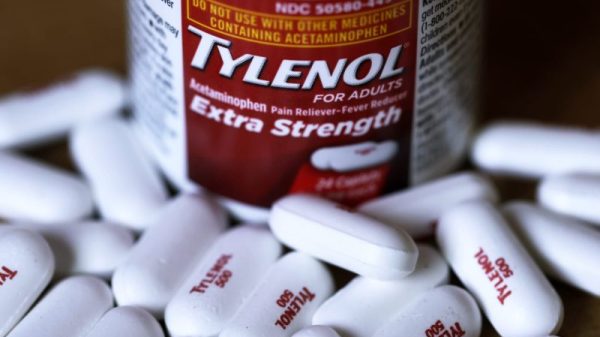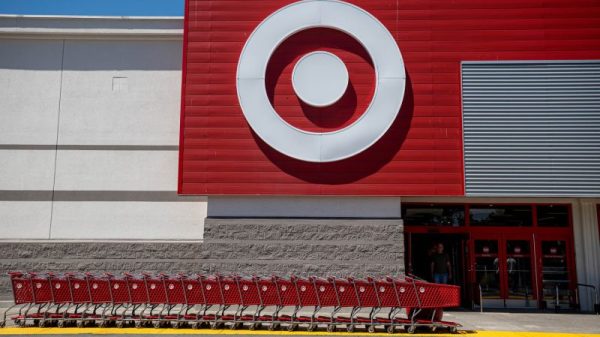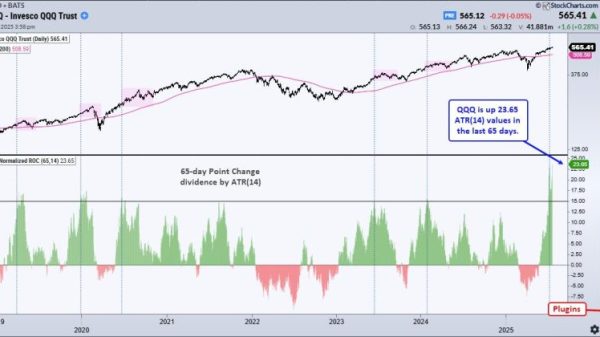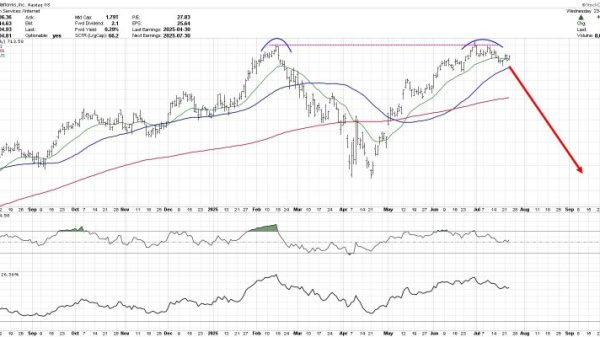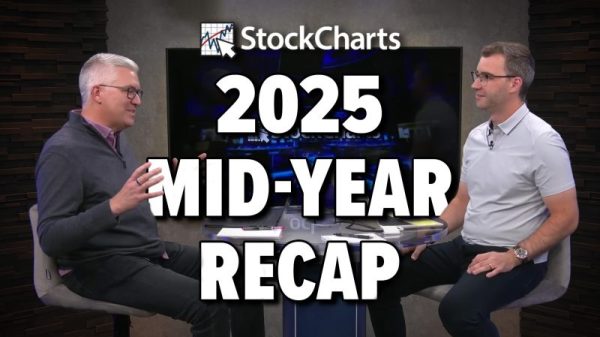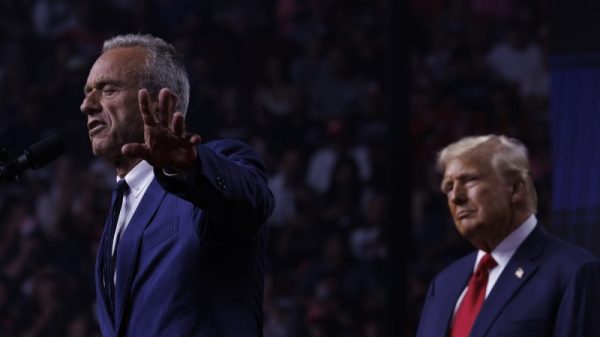RALEIGH — President Joe Biden flew over storm-ravaged parts of western North Carolina on Wednesday and Vice President Kamala Harris ventured farther south to Georgia to speak with emergency responders and devastated families in some of the areas hardest hit by Hurricane Helene, trying to stress to recovering communities that the federal government would be there to aid rebuilding efforts well into the future.
The trips come as the final weeks of the campaign for the White House find Harris and Biden juggling a trio of crises — an escalating war in the Middle East, a longshoremen’s strike that threatens to clog supply chains and the aftermath of one of the deadliest hurricanes in U.S. history. Harris will return to the campaign trail in Midwestern battleground states later this week, but Biden will tour more storm damage in Georgia and Florida.
In the storm’s wake, Harris has tried to step into a role typically played by Biden, empathizing with victims’ searing losses even as she worked to steer recovery efforts their way. In Augusta, Harris said she met with storm victims, including a woman whose husband had died in the tempest. She also highlighted efforts that state, local and federal officials had already taken to bring relief, and stressed that the response would extend far beyond Wednesday’s trips.
“My final point to the residents of this community and this region is we are here for the long haul,” she said in Augusta. “But there’s a lot more work that will need to happen over the long run.”
She said she wanted to take a firsthand look “at the devastation, which is extraordinary. It’s particularly devastating because of the loss of life this community has experienced, the loss of normalcy and the loss of critical resources.”
Helene made landfall on Thursday and carved a deadly path of destruction through six states, killing more than 140 people. The toll was especially high in the western mountains of North Carolina, where Biden visited. At least 57 people were killed around the city of Asheville. North Carolina’s governor, Roy Cooper (D) said some towns had been “wiped off the map.”
The federal government has surged resources to affected areas, but the Republican and Democratic campaigns for President have been on opposite sides of a debate about when is best for a high-profile politician — and the small army needed to ensconce them in a security bubble — to travel to a devastated area.
On Wednesday, six days after the storm made landfall, Biden flew in a loop over the Asheville area, looking down on gutted structures, flattened buildings and fallen trees with Asheville’s Mayor, Cooper and emergency management officials. He will venture to storm-ravaged places in Georgia and Florida on Thursday and meet with people in “impacted communities,” according to the White House.
The vice president toured the Augusta Emergency Operations Center, telling first responders there “I am here to thank you and to listen.”
“I’ve been reading and hearing about the work you’ve been doing over the last few days, and I think it really does represent some of the best of what we each know can be done, especially when we coordinate around local, state, federal resources to meet the needs of people who must be seen, who must be heard,” she said.
The pair of trips came two days after Trump visited Valdosta, Ga., on Monday, using his time on the ground to criticize Harris for fundraising as the storm tore through the American South and blasting the federal government’s response as inadequate. He doubled down on those accusations on Wednesday, as the president and vice president were on the ground.
“The federal government is not being responsive. [Elected officials are] having a very hard time getting the president on the phone,” Trump said falsely on Monday. “He won’t get on, and of course the vice president, she’s out some place campaigning, looking for money.” He also accused Biden of “sleeping” instead of talking to emergency officials and falsely said that the president was not taking calls from Georgia Republican Gov. Brian Kemp.
Kemp had in fact spoken with Biden the day before, and the governor said the state was receiving adequate help.
Trump came to Georgia with Christian relief organization Samaritan’s Purse, which is led by Franklin Graham, and brushed aside criticism that his security footprint was a needless drain on resources at a vulnerable time. Trump said the “many wagons of resources” he brought with him more than made up for the first responders assigned to help protect him.
Biden and Harris have said state and local leaders had asked them to hold off on visiting until emergency officials had made further progress on rescue and recovery efforts, which Harris said “must be the highest priority and the first order of business.” And on Wednesday, Biden made a show of meeting with both Democratic and Republican leaders in the Carolinas.
While Harris and Biden have refused to directly criticize Trump, they have taken subtle digs, saying politicians should keep themselves — and their large security footprints — away from the most severely damaged places, freeing up first responders to restore services and save lives.
Still, with the presidential election just over a month away, there are political implications to the storm response. Natural disasters, and hurricanes in particular, have a history of playing into national elections, and the response to them is often seen as a measure of the competence of the administration in power — or the lack thereof.
Harris was on the West Coast when Helene made landfall, but she cut her campaign stops short and dashed back to D.C. Her campaign sought to project an image of an elected leader deftly navigating a crisis. They released a photo of her talking with emergency officials from Air Force 2. And a half-hour after her plane touched down in the D.C. area on Monday, she was at FEMA’s headquarters, delivering a televised speech about the federal response.
Biden also tried to project a sense of hope even as he described the hurricane’s impact as “heartbreaking.”
“Earlier, I took an aerial tour over Western North Carolina to survey the damage. What I saw was heartbreaking,” Biden wrote on X ahead of his briefing with emergency officials in Raleigh. “But back on the ground, we’re witnessing neighbors helping neighbors, volunteers and workers standing side-by-side, people leaning on each other. That’s America.”
The White House also released an update on the federal government’s response, continuing its daily practice of outlining it efforts for the public.
The Federal Emergency Management Agency has shipped more than 8.5 million meals, 7 million liters of water and 150 generators to affected areas, the White House said.
But Biden said the dockworkers strike could complicate recovery efforts, making it more difficult to get crucial supplies to hard-hit areas.
“This natural disaster is incredibly consequential. The last thing we need on top of that is a man-made disaster that’s going on at the ports,” the president said. “We’re getting pushback already, we’re hearing from the folks regionally that they’re having trouble getting product that they need because of the port strike.”











